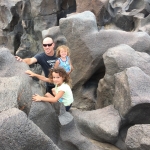
Yesterday afternoon I was one of the first to arrive at a motorcycle accident on a road about two miles from our home. The motorcyclist had lost control of his bike on a very busy street and was lying unconscious in an awkward position when I pulled my car up, threw my hazard lights on and rushed to check on him.
When I reached him his eyes were open, staring up at the sky, and his pulse was not to be found. A man behind me approached with a cell in hand and confirmed that he was calling 911. Turning back, I realized that I was standing over someone that I was sure was dead. My heart skipped a beat. Myself and another new arrival lifted the heavy bike off of the motorcyclist (I tell you, when your adrenaline is rushing motorcycles feel like feathers) and I knelt beside the cyclist again, but this time to find a faint rising and falling of breath in his chest and now an audible inhale and exhale from his mouth. He was wearing a helmet, but when the paramedics arrived and asked me to first cradle his head, and then to remove his helmet, it was saturated with a thick pooling of blood. I spoke to the unresponsive, open eyes of the man with assuring words and held his head and squeezed my arm muscles in a firm L shape until I couldn’t feel them anymore. Eventually the medic team had enough of a crew to take over and they dismissed me. It was really about ten minutes but it felt like ages. My nerves were firing at heightened speeds at the accident, but I cried as I drove away.
I don’t know if Thomas (from his military uniform) survived. He had a young face but peppered grey hair and may have been in his late thirties. I don’t know if he has a family or loved ones that he was racing home to. Who will be grieving for or with him tonight? I don’t know if I’ll ever find out the rest of his story other than scanning the obituaries for the next couple of weeks and hoping that I don’t see his name.
It felt so dreary, so sudden, so over-in-the-blink-of-an-eye.
About an hour later I was conversing with a good friend of mine who works in emergency medical services via text about the incident. For being a pretty calm person (even under a lot of stress), I was caught off guard at how nerve-wrecking decisions became. I chose not to administer CPR because I felt faint breathing, I didn’t reposition the man because I was worried for his spine, I thought most about T who was in my parked car (would someone hit her?) until another person driving by blocked my car and sat with her. I wasn’t the first on the scene, but I was surprised to find that I was the first to kneel next to this broken man and whisper (yell) into his ear, feel his heart, put my hands on his neck to check for anything.
I think that there is a strange uneasiness that overcomes when we are presented with such a tragic situation. A ‘what do I do?’ that takes over. With this in mind I quizzed my friend with a few questions that I wanted to share today.
1. If you’re the first on the scene of an accident? What should you do?
The most important thing is to keep your own safety in mind. It’s great to want to stop and help especially if no one else is there, so it’s super important to slowly and safely pull all the way off the road or to a safe place. Don’t do anything frantic. Only get out of your car if your sure it’s safe to do so. People should keep in mind that an accident already happened and for the most part the damage has already been done, if you end up causing another crash or getting clipped by a car then you not only hurt yourself but there’s an extra patient or patients that will require extra resources and attention. So stopping to help is good, but safety has to be number one.
Make sure 911 is activated as quickly as possible. The guys responding are eating lunch, or grocery shopping, or shampooing their hair – the sooner they’re activated the sooner the wheels on the engine and ambulance will start rolling.
Along with this is providing and committing to memory as many details of the accident as you can. Saying there’s a car crash doesn’t provide much info. If you saw it happen, mentally stop and take a minute to remember the details: where were the cars when it happened, what kind of cars, how fast, any braking before crash, what exactly happened to cause the accident, lanes they were in, which car did what and so on. If there’s a traffic light involved stop and remember what the light was doing. Where exactly was the point of impact of the vehicles? Example: front right of red SUV struck the back left of brown 4 door sedan causing sedan to spin twice, rollover once, vehicles traveling at 40 mph with no braking seen or heard, people were they ejected. All of the details are important so stop to think about them. 911 will want to know how many cars and how many estimated victims.
Also be sure to note an accurate location such as an intersection or near what freeway exit. Were they traveling northbound or southbound, east or west of the exit, on the offramp or onramp. The one thing people who see the accident can do that no EMS responder (emergency medical services responder) can do is provide a detailed picture of what actually happened. The mechanism helps predict a lot of injury patterns.
2. When can I safely reposition an unresponsive person? (Say they’re buckled into a car or in danger.)
In general patients shouldn’t be moved, I’d say it’s ok to move people if they’re in immediate danger. The thought is that potential neck and back injuries can be made worse with excessive movement. Instead talk to the victims, tell them not to move their head or neck. Try to keep them calm. Also keep paying attention to details – are they wearing seatbelts? Lap belts or lap and shoulder? Did you undo the seatbelt to take the person out or were they unrestrained? If you move someone, remember how you found them so you can retell it.
If someone is not breathing move them out of car and lay them flat. Try to keep the head in a neutral position in line with the spine. Someone can be designated to hold the head in this position until told to let go by EMS.
3. When should I administer CPR?
Take a good 10-15 seconds to check for breathing. Take your time, you can even put your hand on their chest or expose their chest to help. Sometimes it can be hard to tell at first. You can check for a pulse if you feel comfortable, but finding a pulse can be really tough. I would advise to visually check for breathing. If someone’s breathing then they have a pulse. If someone’s not breathing then it probably won’t be too long before their heart stops. If they’re not breathing, I’d be comfortable telling you to lay the person flat on the ground, reasses their breathing since it’s possible that just the repositioning of their head and neck has reopened the airway.
If they still aren’t breathing CPR would be appropriate. No breathes (an older methodology), just continuous chest compressions. Push hard and fast.
4. What if they are bleeding heavily?
If someone is excessively bleeding from a certain spot then direct pressure can be applied. Once again there is a huge risk involved here since you will not have the appropriate protective gear. But if you’re comfortable using a tshirt or something similar, then apply really hard pressure. And don’t let go to see if the bleeding has stopped. Keep pressure on until medical personal relieve you.
5. Any other thoughts that we may have not covered?
If you feel comfortable approaching a crash know that there are many risks and hazards (too many to mention0, be careful, aware, and know you’re assuming risk. When it comes to dealing with the victims try to stay calm and speak to each person calmly. Get a sense for how critical they might be, their ability to respond to you will tell you a lot. Someone who is freaking out because they’re in a lot of pain can be distracting and stressful but they are less critical than the person in the back seat who won’t look at you or respond verbally. 911 should be updated if there’s new important info once you’ve interacted with the victims.
To my friend, thank you so much for this overview. I myself had forgotten that there are no ‘breathes’ involved with the new CPR methods that are taught today (just hard and fast chest compressions). It’s been ages since I was certified and I urge everyone to consider certification again or for the first time.
I hope that you all have a safe and healthy weekend, I hope that this doesn’t leave you on a sad note but instead on an empowered one! All the best. xo.






Oh, wow. I think people’s character comes out at times like this! I’ll keep Thomas in my prayers.
Morgan! I’ll be praying for your peace and for Thomas’s situation, whatever it may be. He was fortunate to have someone as collected as yourself care for him. Thank you for the useful information, too.
Wow, what a scary experience, Morgan. Sounds like you were much more calm than I would have been. Thank you for the info- I would be at a complete loss what to do.
Nice job and reminder!
Thank you for being there. For that special person. God put you there for a reason. And that’s why I love you so much.
This information could save someone’s life. Thank you for sharing it. What a harrowing experience for you. I hope and pray that all is well with both you and the gentleman you found. God was looking out for your T and you did the right thing. Many blessings to you.
Thank you for sharing this very important information Morgan. What a frightening situation for you!! That man was fortunate that you were there to help and I’m so glad someone stopped to help with Taylor. I hope he survived and is with his family, but I can imagine how disturbing it must be for you, not knowing the outcome. I hope you’ll be able to relax & enjoy the weekend with your sweet family and know that you did everything you could. Take care and thanks again for this valuable information. Janelle <3